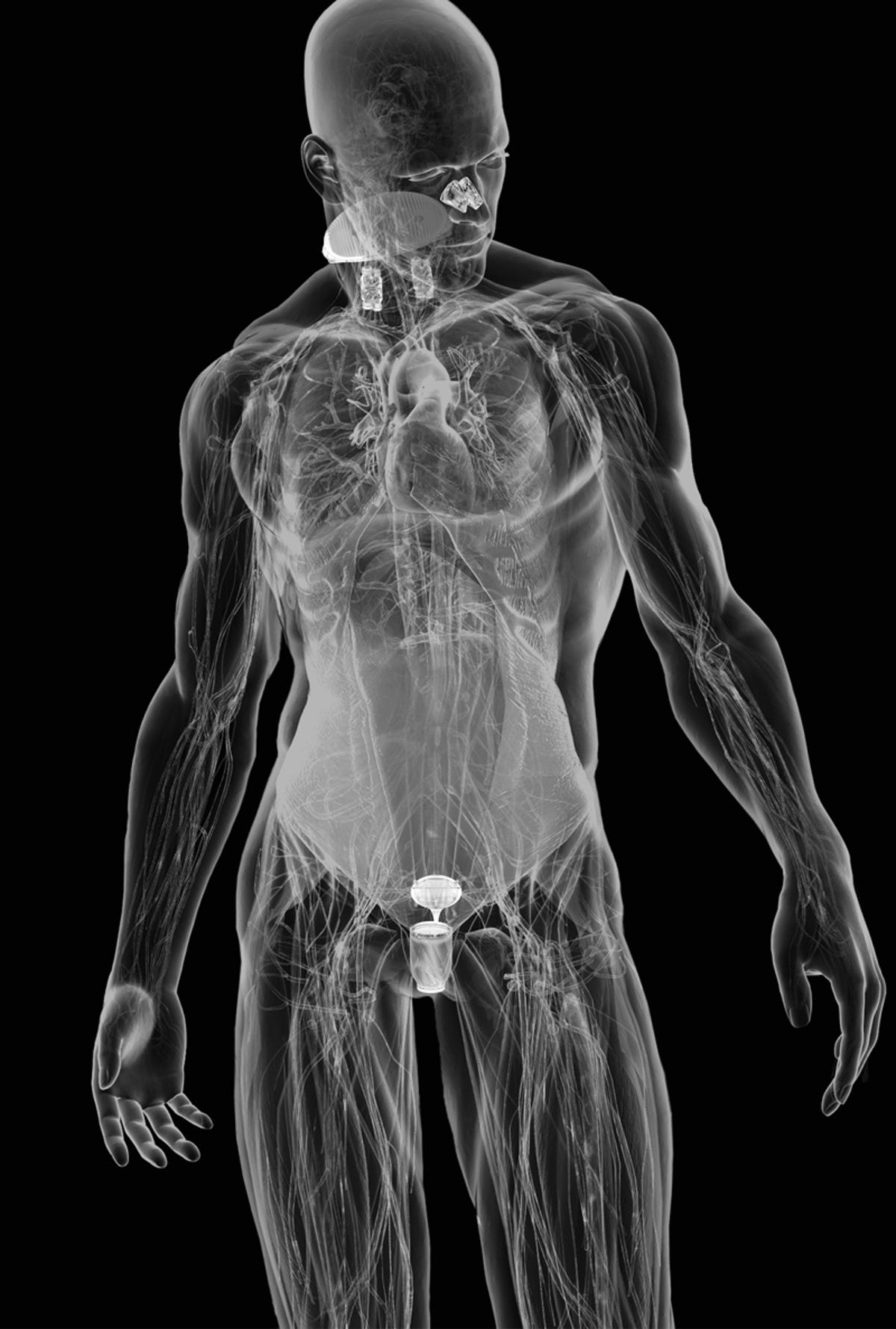Fake organs to help humans save H20 (pictures)
How do you design a water bottle for the end of the world? For a large-scale art exhibition, Japanese design firm Takram comes up with a unique answer.

Artificial organs
Never mind the zombie apocalypse and the robo-revolution. What if environmental calamity comes to pass and we find ourselves faced with the reality of severely limited resources? Say, for example, drinkable H20?
That's the question that was put to the team at Japanese design-engineering firm Takram,, which has worked with, among others, Toshiba, NTT Docomo, and Toyota. Their novel response? Forget about fashioning some sort of high-tech water bottle and instead create artificial organs that could be implanted in humans to make their bodies more efficiently use what water is available.
As noted by The Creators Project, the resulting Shenu: Hydrolemic System is a conceptual work put together by Takram for Documenta (13), a large-scale exhibition of contemporary art that takes place in Germany every five years and is happening this summer.
Among other goodies, the setup includes "nasal cavity inserts" meant to decrease the amount of moisture lost when we exhale, and a "renal fecular dehydrator," designed to make it really uncomfortable to sit down be implanted near the rectum and squeeze every last drop of usable water out of our solid waste.
"Informed by both the sciences and projections of technological capabilities, the set of artificial organs work synchronously to regulate the water loss so that people with these organs can consume less water to survive compared to those without," Takram says on its Web site.
Click through the slideshow to check out the components of this unique "water bottle."

